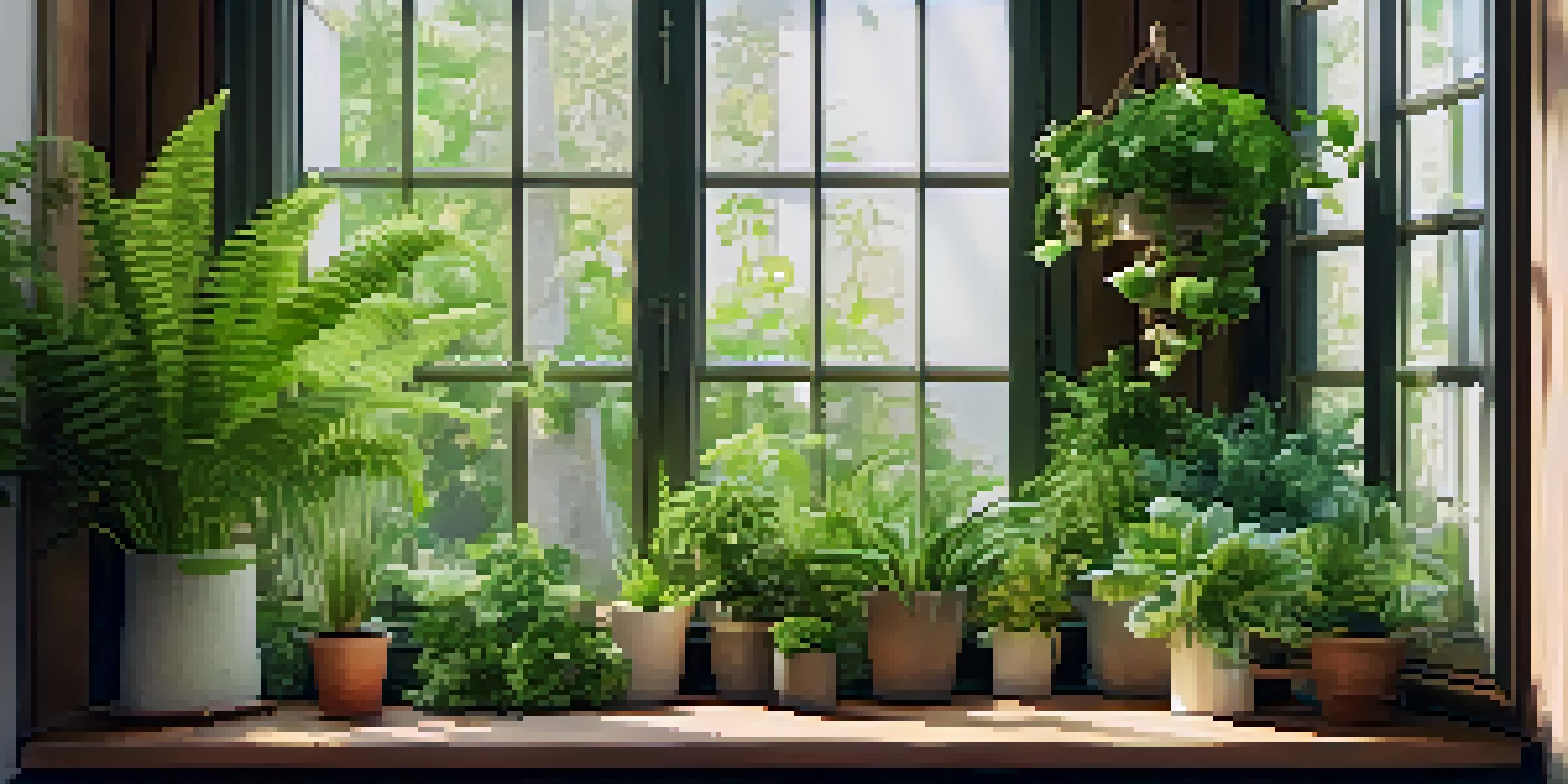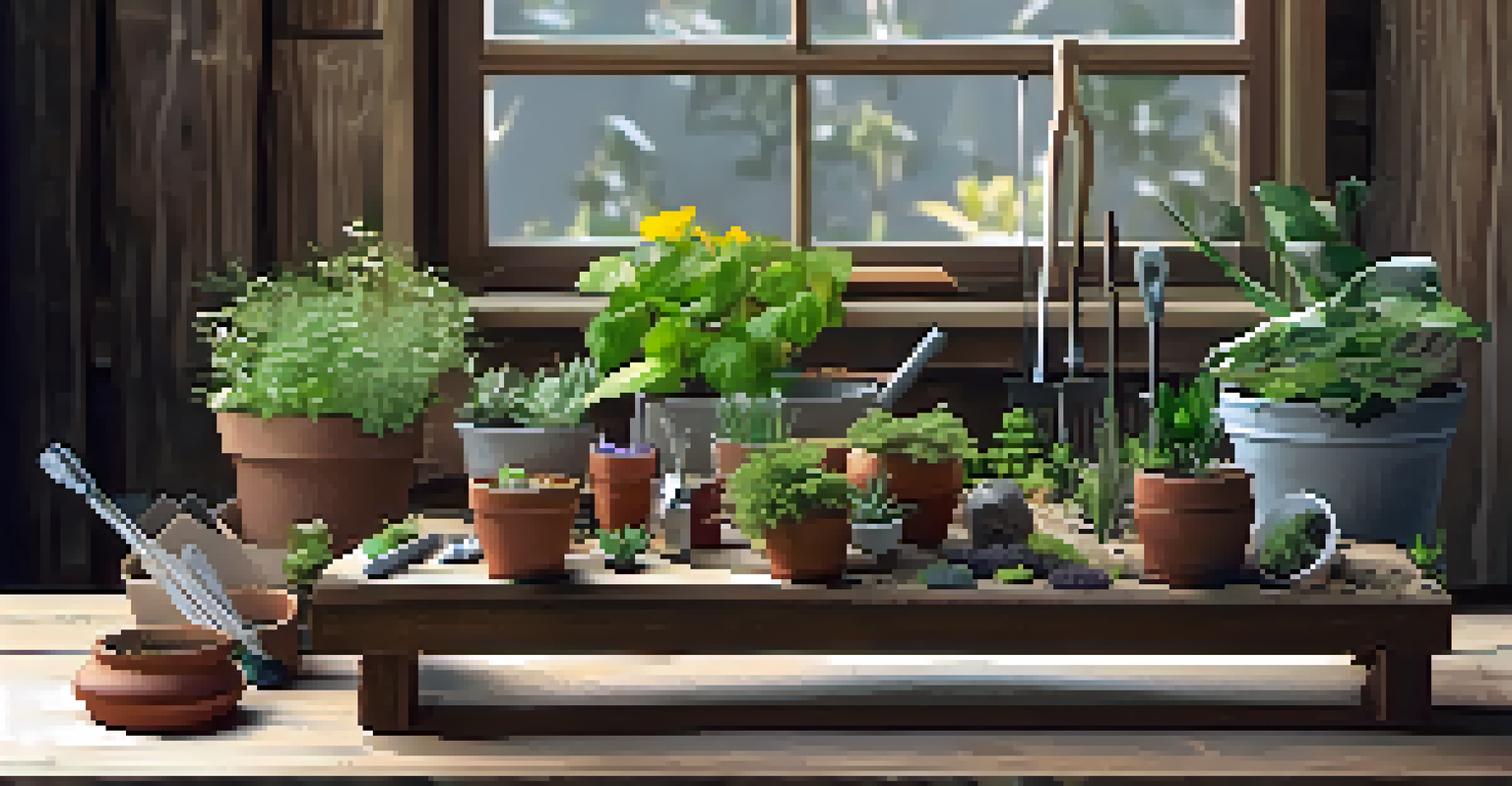DIY Vertical Garden Ideas for Home and Small Apartments

Understanding Vertical Gardens: What Are They?
Vertical gardens, also known as living walls, are a fantastic way to bring greenery into your home, especially in small spaces. These gardens utilize vertical space by growing plants upward rather than outward, making them ideal for apartments or homes with limited floor area. They can be created using various materials, including wood, metal, or even recycled items, allowing for creativity and personalization.
The best time to plant a tree was twenty years ago. The second best time is now.
One of the main benefits of vertical gardens is their ability to improve air quality and enhance the aesthetic appeal of your living space. Imagine walking into a room adorned with lush greenery, which not only looks beautiful but also contributes to your well-being. It's like having a mini-forest right inside your home!
In addition to their visual and health benefits, vertical gardens can also serve practical purposes. They can be used to grow herbs for cooking, flowers for decoration, or even small vegetables, providing fresh produce right at your fingertips. This versatility makes them a worthwhile investment for any home.
Choosing the Right Location for Your Vertical Garden
Selecting the ideal location is crucial for the success of your vertical garden. Look for areas that receive adequate sunlight and have easy access to water, as most plants thrive in bright, indirect light. Balconies, kitchen walls, and even shower areas can be transformed into vibrant vertical gardens with the right planning.

Consider the climate and temperature of your chosen spot. For instance, if you're placing your garden outdoors, ensure the plants you select can withstand local weather conditions. On the other hand, indoor vertical gardens should be tailored to the lighting and humidity levels of your home, ensuring your plants stay healthy and vibrant.
Vertical Gardens Enhance Spaces
Vertical gardens bring greenery into small spaces, improving air quality and aesthetic appeal.
Lastly, think about visibility and accessibility. You want your vertical garden to be both an eye-catching feature and something you can easily maintain. Position it where you can enjoy the beauty while also having the ability to care for your plants without any hassle.
Selecting Plants for Your Vertical Garden
Choosing the right plants is key to creating a thriving vertical garden. Opt for varieties that are well-suited to vertical growth, such as trailing vines, succulents, or even small herbs. Each plant has its unique needs, so consider factors like light, water, and space when making your selections.
Gardening is a way of showing that you believe in tomorrow.
For beginners, starting with low-maintenance plants can alleviate some of the stress that comes with gardening. Options like pothos, spider plants, or ferns are forgiving and can adapt to various conditions, making them perfect for those just starting their green journey. Plus, they can add a touch of elegance to your vertical garden!
If you're feeling adventurous, you can also explore edible plants, like basil or mint. Not only do they look great, but they also provide fresh herbs for your culinary creations. Just imagine the satisfaction of picking fresh mint for your favorite cocktail right from your living wall!
DIY Vertical Garden Kits: A Convenient Option
For those new to gardening, DIY vertical garden kits can be a game-changer. These kits often come with pre-designed structures, soil, and plants, making it easy to get started without the guesswork. They are perfect for anyone who wants to skip the planning phase and jump straight into the fun of planting.
Many kits also include instructional guides, which can help you learn about plant care and maintenance as you go. This hands-on approach not only teaches you about gardening but also sparks creativity as you customize your vertical space. Plus, it’s a great activity to enjoy with family or friends!
Choosing the Right Plants Matters
Selecting suitable plants is crucial for a thriving vertical garden, considering their light and water needs.
Most importantly, DIY kits come in various styles and sizes, allowing you to choose one that fits your space and personal taste. Whether you’re looking for a sleek modern design or a rustic wooden frame, there’s a kit out there that can match your vision perfectly.
Building Your Own Vertical Garden Frame
If you’re feeling crafty, building your own vertical garden frame can be a rewarding project. You can use materials like reclaimed wood, pallets, or even PVC pipes to create a structure that suits your style and available space. The best part is that you can customize the size and shape to fit any wall or corner of your home.
To get started, gather your materials and tools. You’ll need basic supplies like screws, a drill, and potting soil. Start by constructing the frame and ensuring it's sturdy enough to support the weight of the plants and soil. Once your frame is ready, you can line it with landscape fabric to hold the soil and prevent it from spilling out.
After your frame is set up, it’s time to fill it with plants! Arrange them in a way that considers their light and water needs. This step allows you to create a visually appealing design while ensuring each plant thrives in its environment. With a little effort, you’ll soon have a stunning vertical garden that enhances your living space.
Maintaining Your Vertical Garden for Longevity
Like any garden, vertical gardens require regular maintenance to thrive. Watering is crucial, and you should check your plants regularly to ensure they’re receiving the right amount of moisture. Depending on the plant types and your environment, you may need to water them more frequently during hot weather or less during cooler months.
Fertilizing is another important aspect of maintenance. Using a balanced, water-soluble fertilizer can help nourish your plants and promote healthy growth. Make sure to follow the instructions for application, as over-fertilizing can harm your plants rather than help them.
DIY Kits Simplify Gardening
DIY vertical garden kits offer an easy way to start gardening without the hassle of planning and designing.
Lastly, keep an eye out for pests or diseases. Regularly inspecting your vertical garden will allow you to catch any issues early on. By being proactive and attentive, you can enjoy a flourishing vertical garden that brings life and beauty to your home for years to come.
Creative Ideas for Styling Your Vertical Garden
Styling your vertical garden can turn it into a stunning focal point in your home. Consider incorporating decorative elements like fairy lights, colorful pots, or even art pieces that complement the plants. This can create a unique and inviting atmosphere, making your garden a delightful feature of your space.
You can also play with different plant heights and textures to create visual interest. Mixing trailing plants with upright varieties adds depth and character to your vertical garden. Think of it as creating a living tapestry, where each plant contributes to the overall beauty and harmony of the design.

Moreover, don't hesitate to change things up! Seasonal adjustments can keep your vertical garden fresh and exciting. Swap out plants or rearrange the layout to reflect different times of the year or your evolving style. This flexibility allows your garden to grow alongside you, continuously bringing joy to your home.